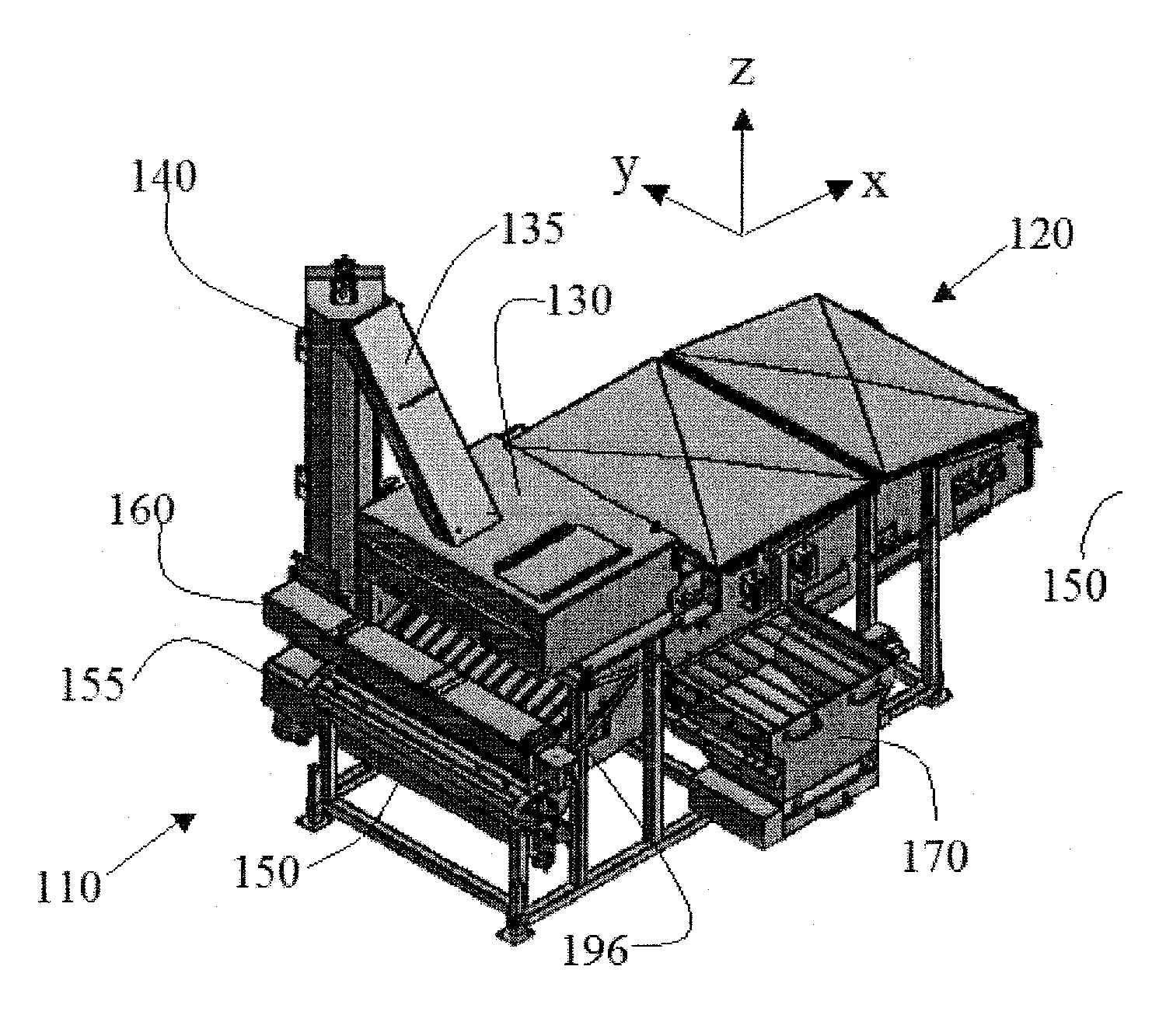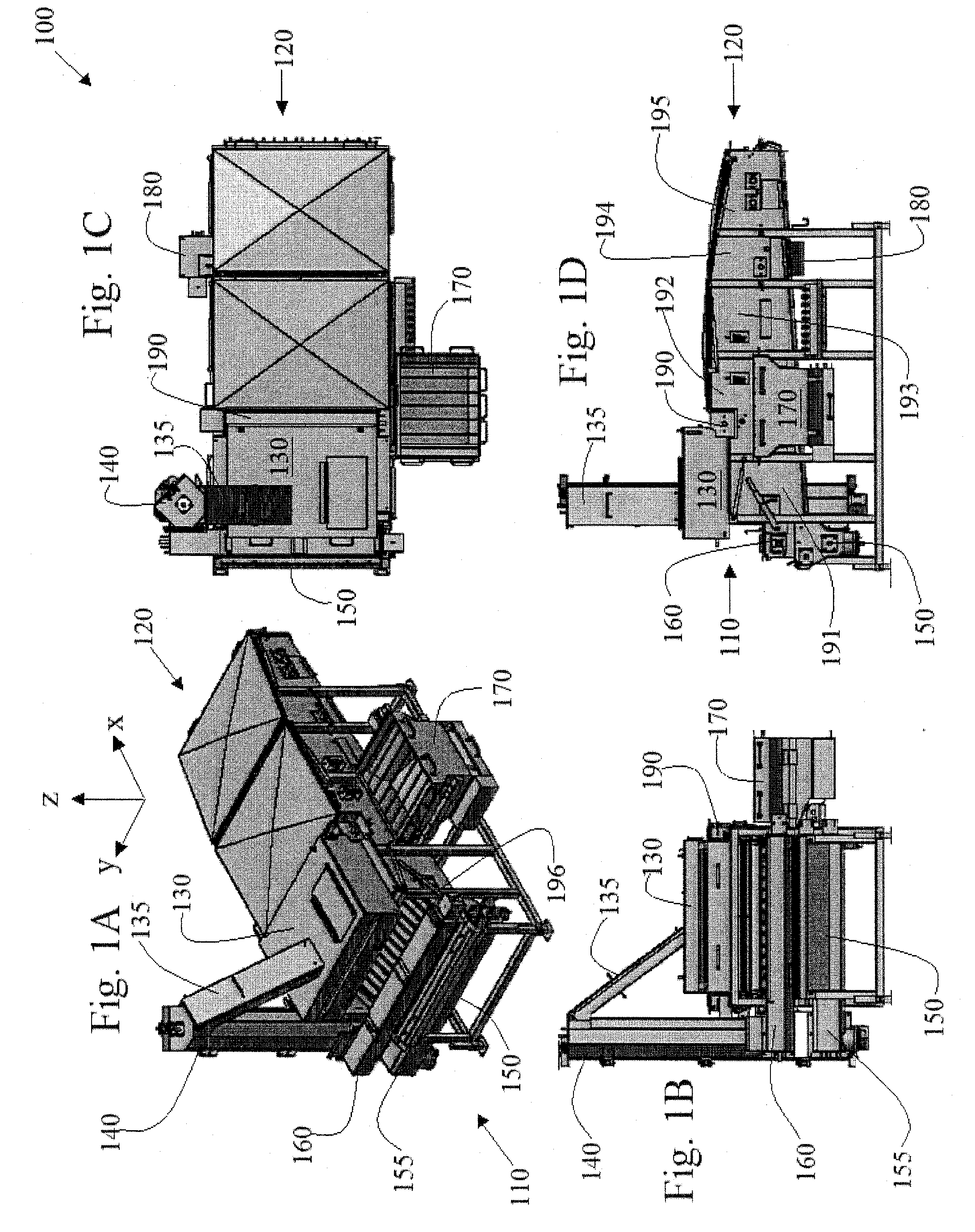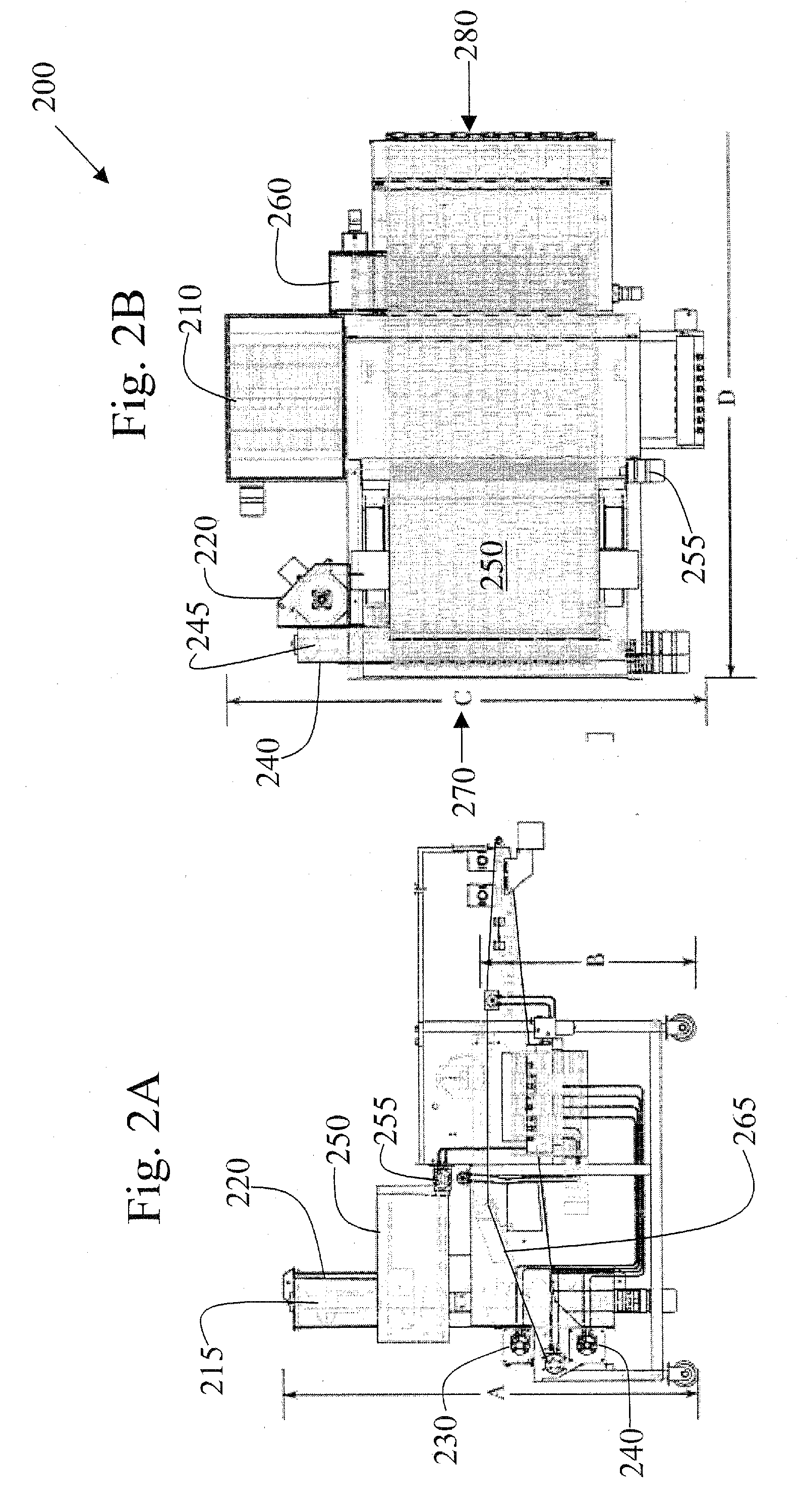Breading machine and methods of operation
- Summary
- Abstract
- Description
- Claims
- Application Information
AI Technical Summary
Benefits of technology
Problems solved by technology
Method used
Image
Examples
Embodiment Construction
[0050]FIG. 1 illustrates several views of a first embodiment of a breading or coating machine 100. The breading machine 100 includes an input side 110 and an output side 120. Food products to be coated with a coating material (e.g., flour, bread crumbs, cracker meal) enter the breading machine 100 on the input side 110 and exit on the output side 120. The food products are typically fed into the input side 110 via a conveyor belt, for example, such as from prior equipment, such as a batter applicator. The food products are coated in the machine 100 and are typically fed out of the output side 120 and into, for example, a baking oven or fryer (not shown). The volumes of food products processed in this way are significant, and may be on the order of 10,000 pounds per hour or more, requiring significant amounts of coating materials, and distribution onto all of the food products passing therethrough in a uniform and desired manner. The breading characteristics desired for various food ...
PUM
 Login to View More
Login to View More Abstract
Description
Claims
Application Information
 Login to View More
Login to View More - R&D
- Intellectual Property
- Life Sciences
- Materials
- Tech Scout
- Unparalleled Data Quality
- Higher Quality Content
- 60% Fewer Hallucinations
Browse by: Latest US Patents, China's latest patents, Technical Efficacy Thesaurus, Application Domain, Technology Topic, Popular Technical Reports.
© 2025 PatSnap. All rights reserved.Legal|Privacy policy|Modern Slavery Act Transparency Statement|Sitemap|About US| Contact US: help@patsnap.com



